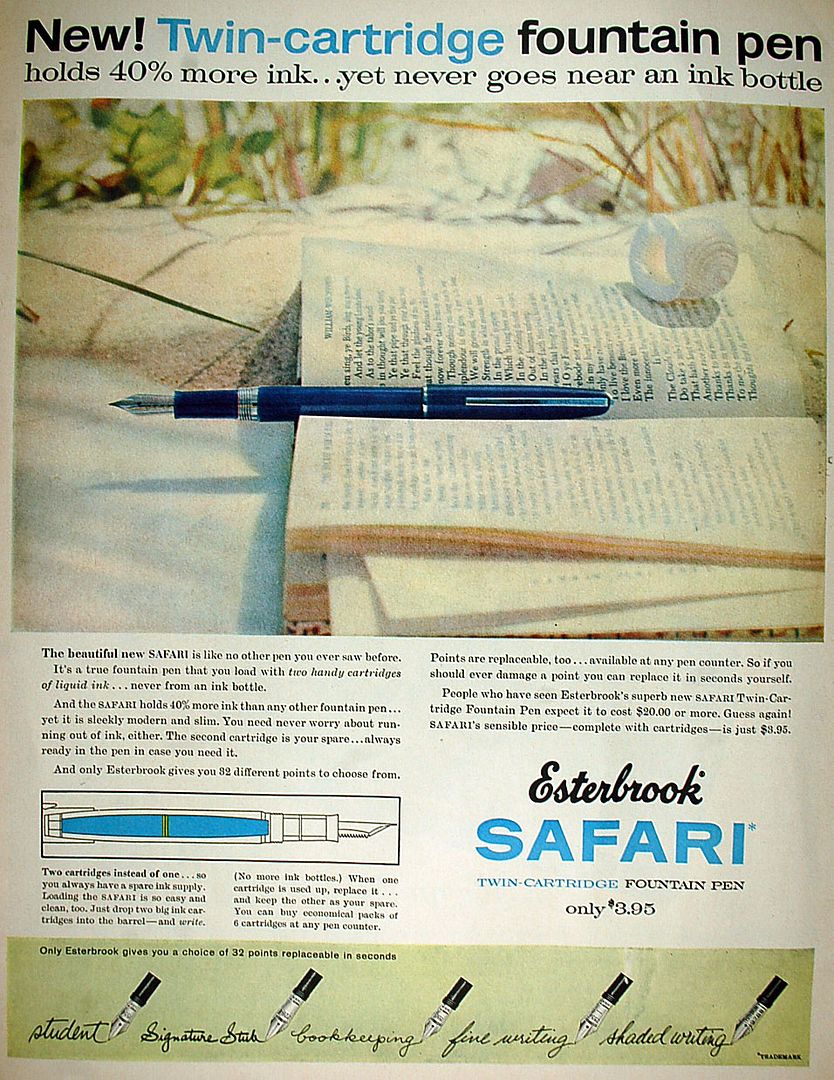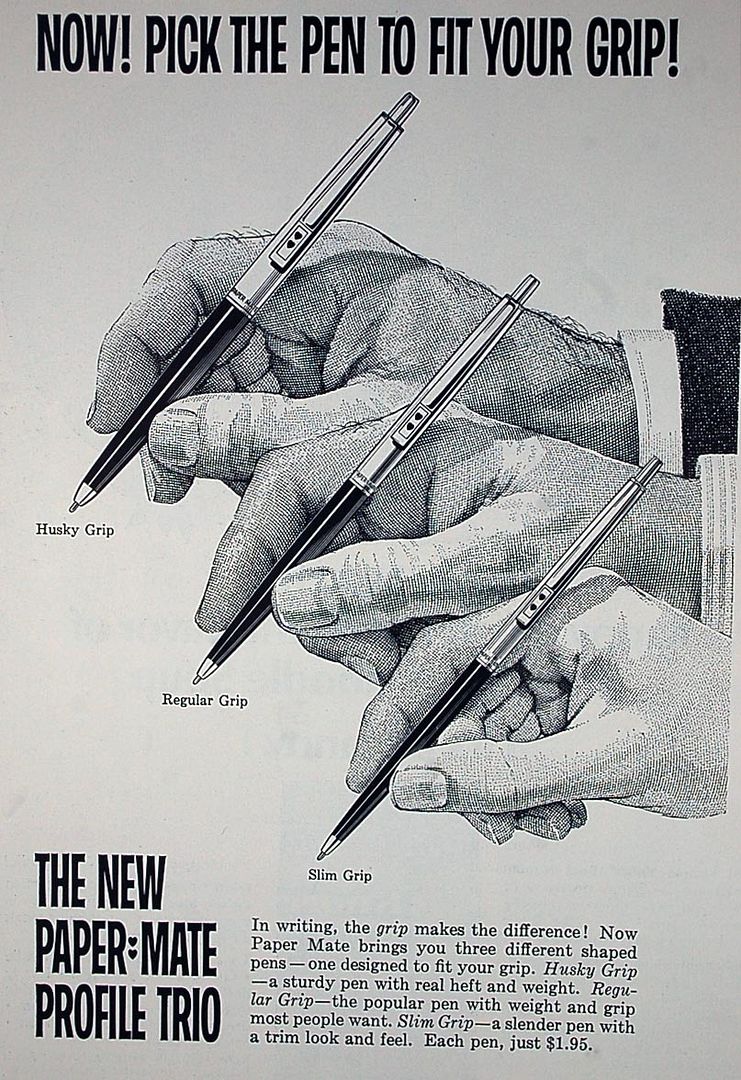Interestingly, I have read more and more internet articles about recent pens such as the Sheaffer No Nonsense and Parker Vector. Though I do not consider them Vintage, they are collectible to some, even though Restoration involves little more than cleaning, or substituting nibs. This reminded me that I had started an article on the Esterbrook Safari, a lesser known Esterbrook fountain pen from the late 1950s, and needed to complete it….
The Esterbrook Safari was one of the Company’s attempts at producing a Cartridge filling pen, as fountain pens evolved to this filling system. All previous restorations of Esterbrook pens have been lever fillers, which was the predominant Esterbrook system. For a glimpse back at some previous Esterbrook restorations, please read these previous articles:
Fountain Pen Restoration 101 – May 8, 2008
Esterbrook Bowling Pen – September 13, 2011
Esterbrook Nurses Pen – August 5, 2011
Esterbrook Pastels - July 5, 2011
I was going through some old magazines when I ran across this old advertisement from the late 1950s. It reminded me to be on the lookout for one of these pens. Within the past year, I actually stumbled into two of them, which I will discuss below. First, the advertisement. As you can see, the thrust of the campaign is the ease and economy of the cartridges. One cartridge is in use, and the other fits over the active cartridge, at the ready as a spare. Add the two together and you have what Esterbrook touted as 40% more ink than other pens. Clever marketing. Add the usual Esterbrook removable / replaceable nibs (32) and a low price point of $3.95 in the late 1950s, and you can see where they were headed.
The photos below are of the two cartridge fillers taken apart. You can see that the section and barrel are an easy screw fit, and the familiar interchangeable nibs are as well. Not much restoration to be done other than simple clean up. I cleaned the nib units together in an ultrasonic cleaner. Then the barrels, sections, and caps followed. Be careful handling these as the plastic on these is very fragile and prone to cracking.
The proprietary Esterbrook cartridges are, of course, no longer manufactured, so I found an empty extra on ebay, and cleaned it out thoroughly. This will allow me to use this cartridge in one of the pens. I will fill it using a syringe, as shown below. First, I had to clear out the dried blue ink from the cartridge. Once cleaned, it is ready to be filled with bottled ink of choice.
Below are the completed pens, cleaned and polished.
The pens measure 5 1/2 inches closed and 6 1/4 inches capped. Both came with 2668 nibs, which are unremarkable firm medium nibs. Another nice feature of these pens is that any other Esterbrook nibs will work on these, so you can swap out one of your 9000 level nibs on these, if you chose.
Here is one final photo – the cap, which features a unique and attractive clip and shiny slanted cap end. A nice touch for the price, I think.
Safaris were first seen in 1957, the same date as the advertisement above. They came in six colors – Gray, Dark Blue, Light Blue, Green, Red, and Green. After a short run with plastic caps (as seen in these two pens), Esterbrook decided to use a sturdier metal cap. So, you may find these same colors with a later metal cap. Plunger fillers were also produced, though I have never handled one of these. Finally, matching pencil sets were available. An excellent source of information and photos, providing a much more educated and thorough review can be found at Esterbrook.Net, an excellent site maintained by Anderson Pens.
Safari’s are another example of an attractive pen, with a unique design, use standard Esterbrook J/SJ/LJ nibs, that can still be used today. Keep an eye out for them….

















































































































































